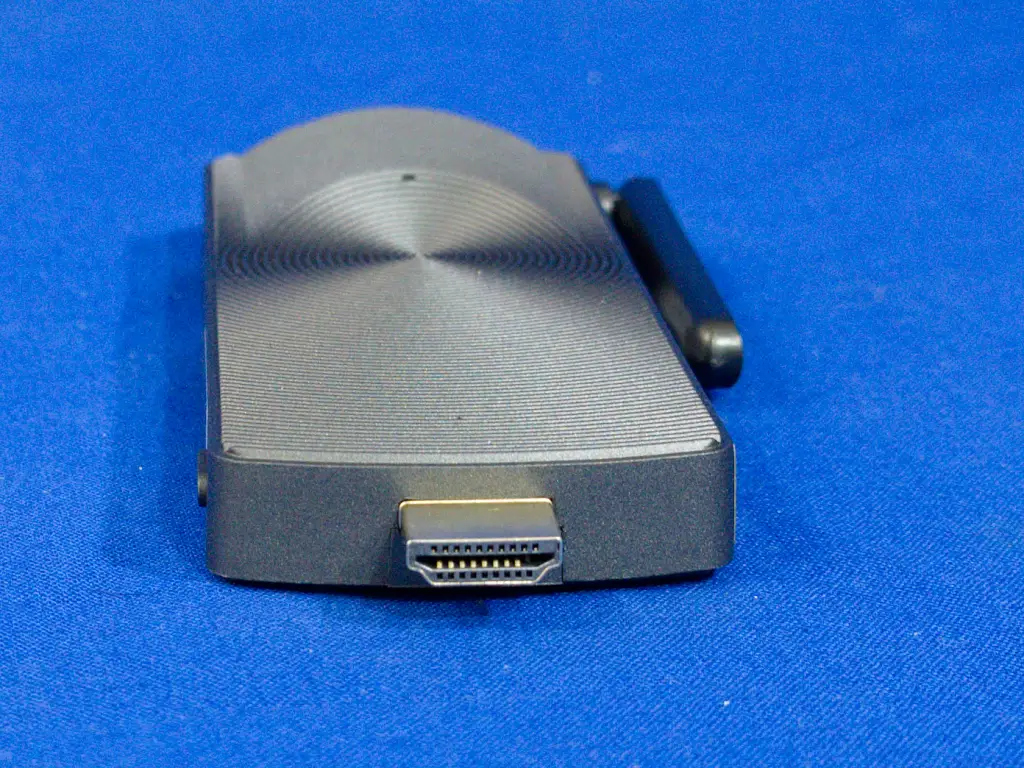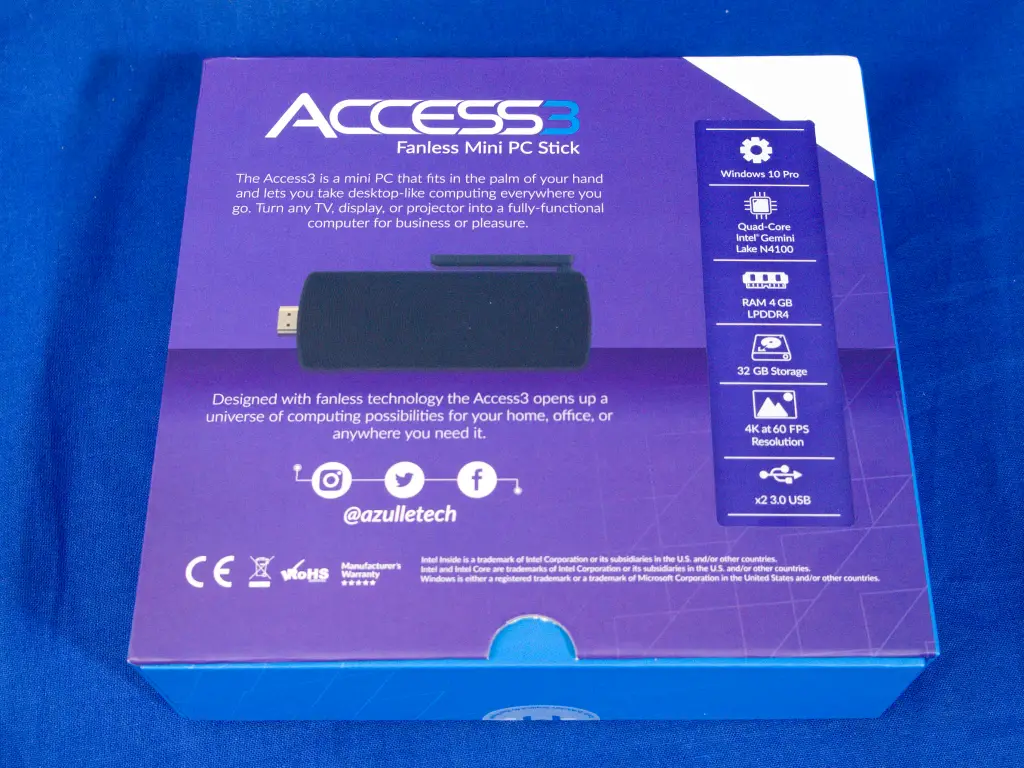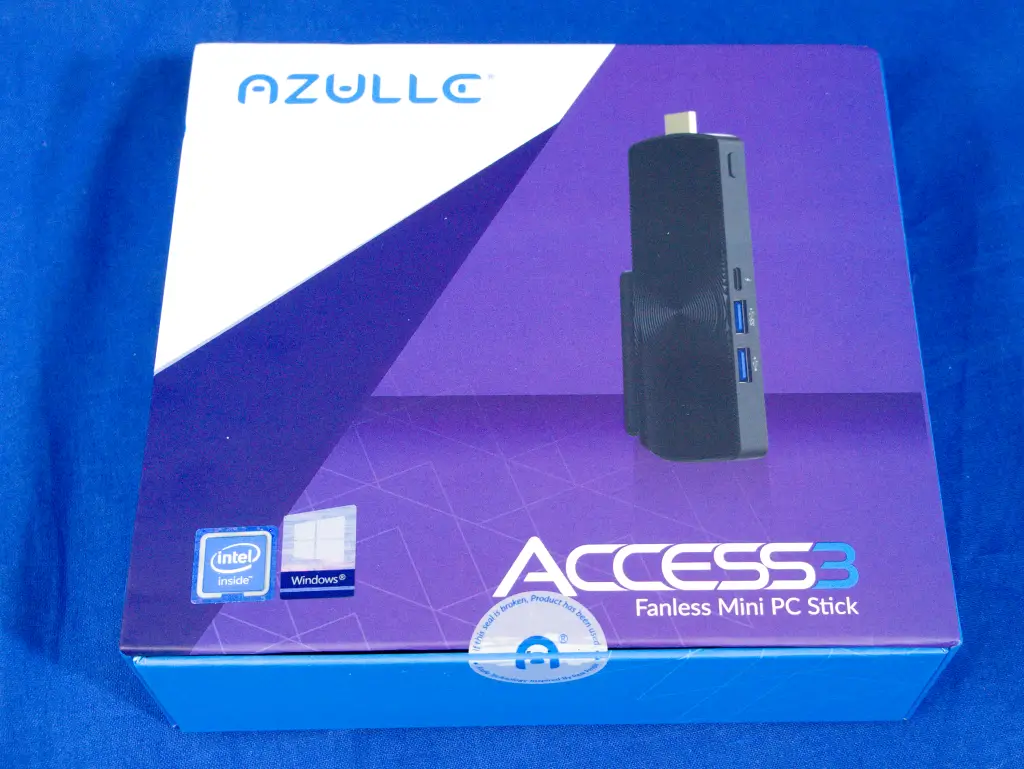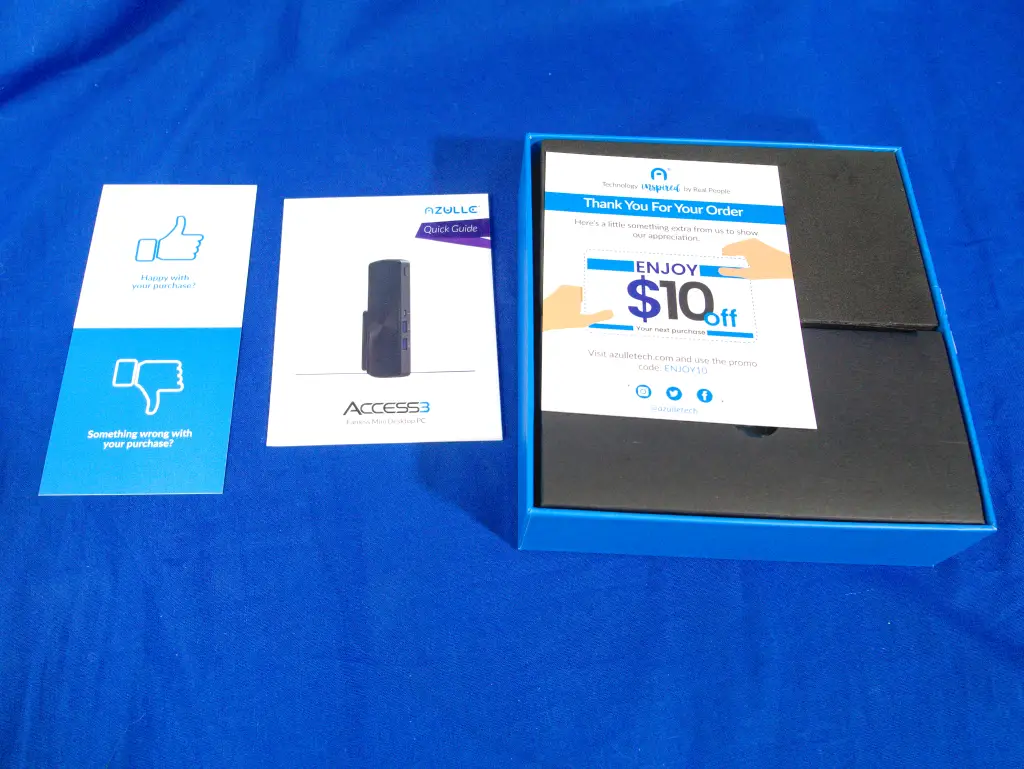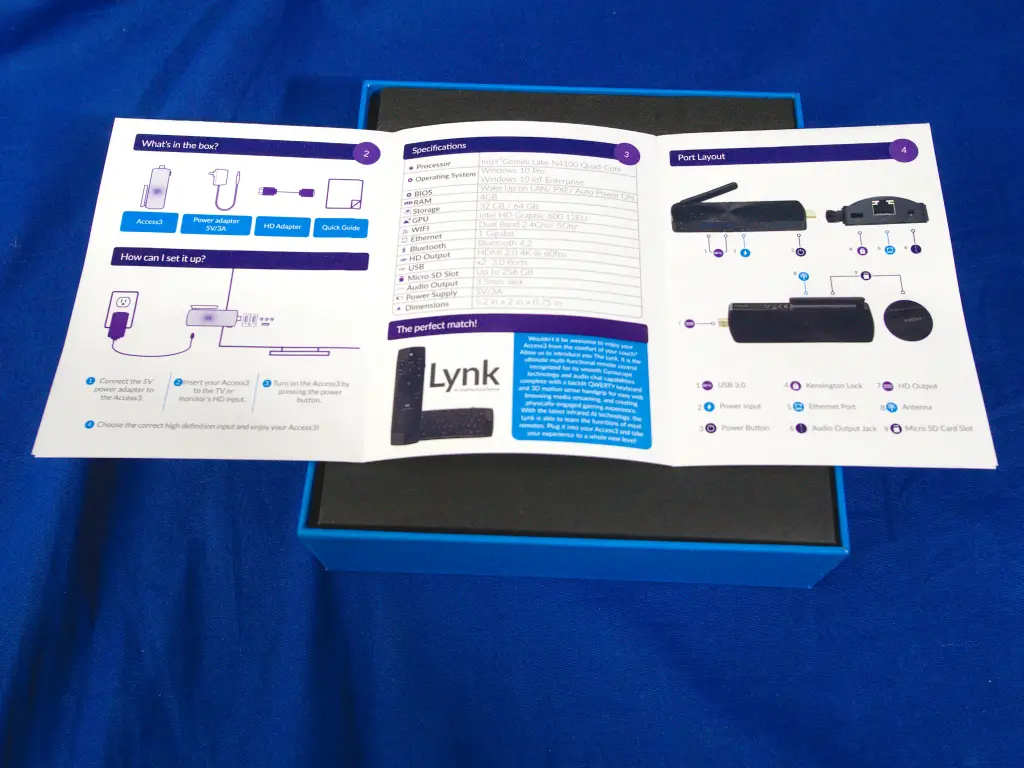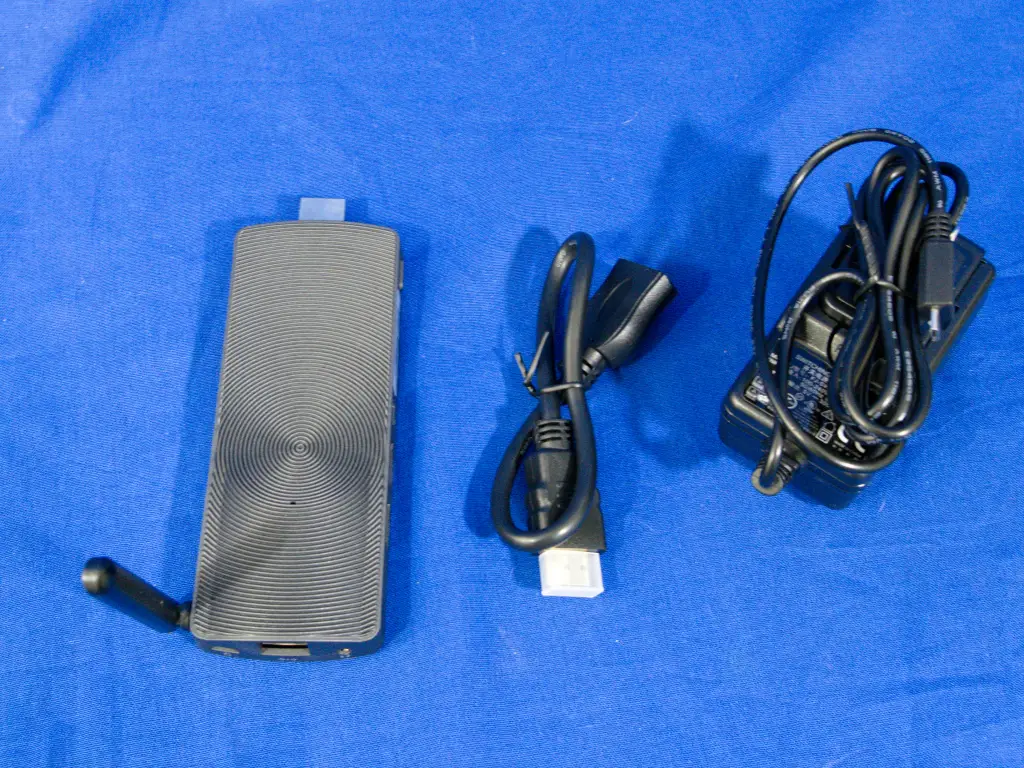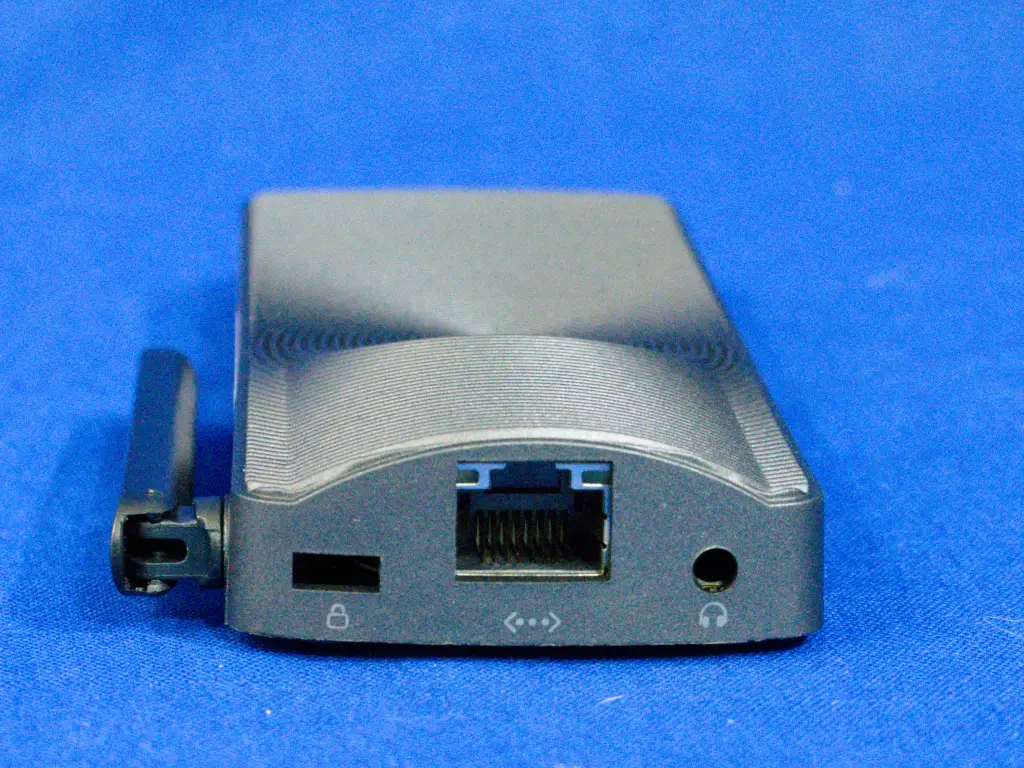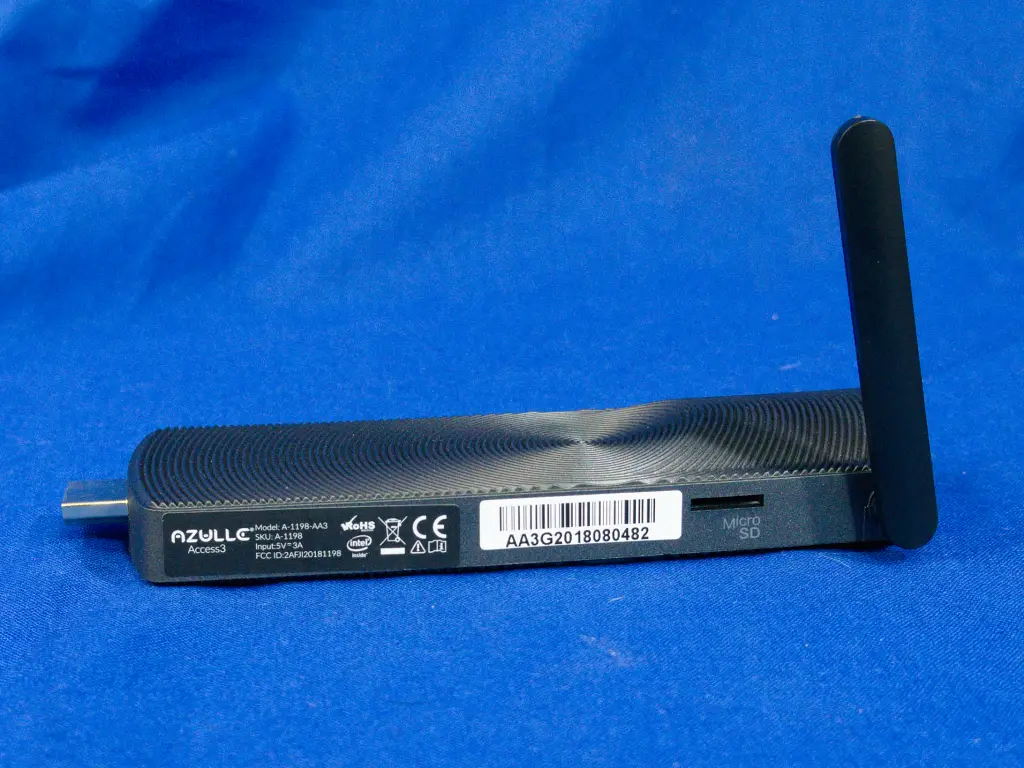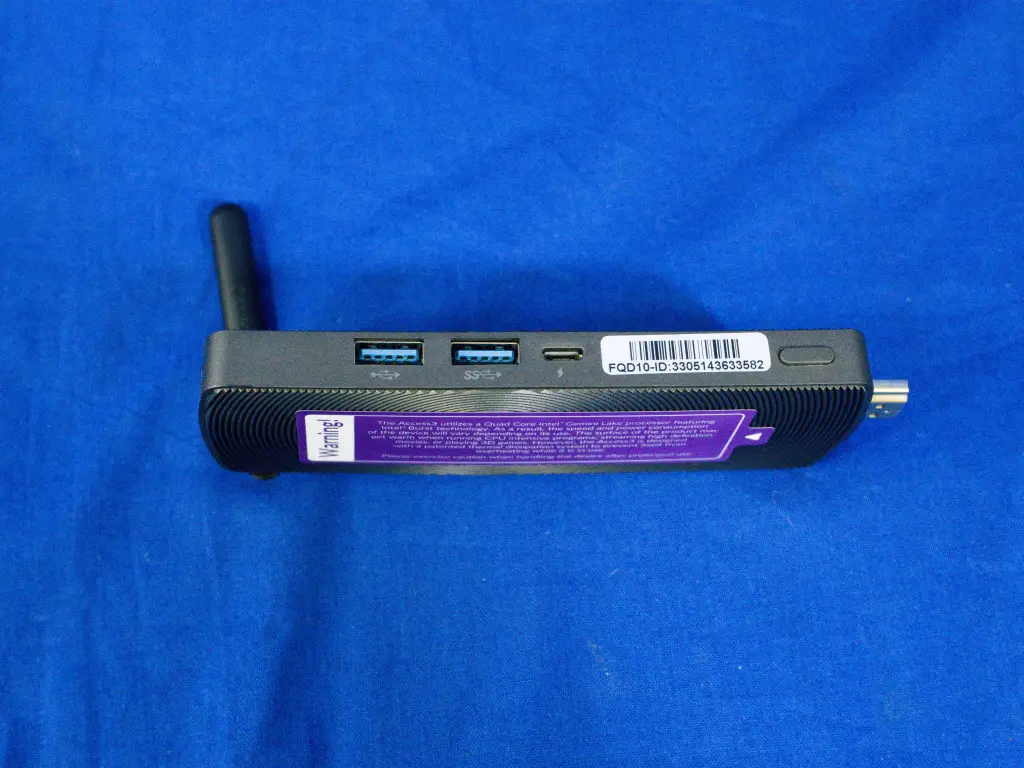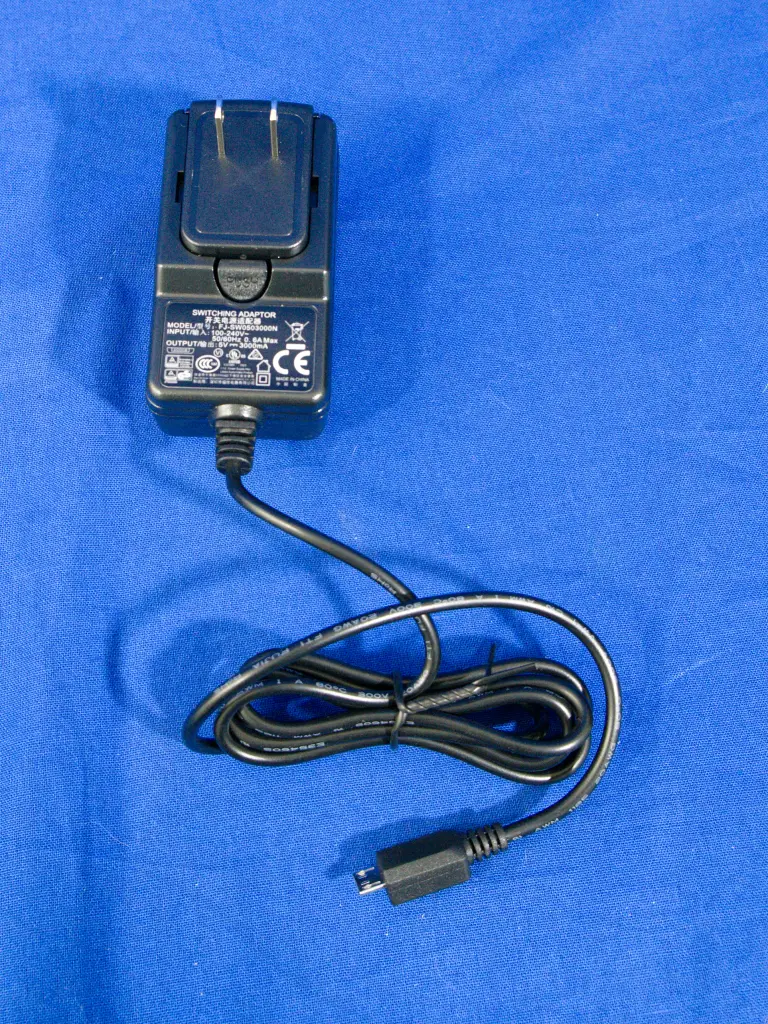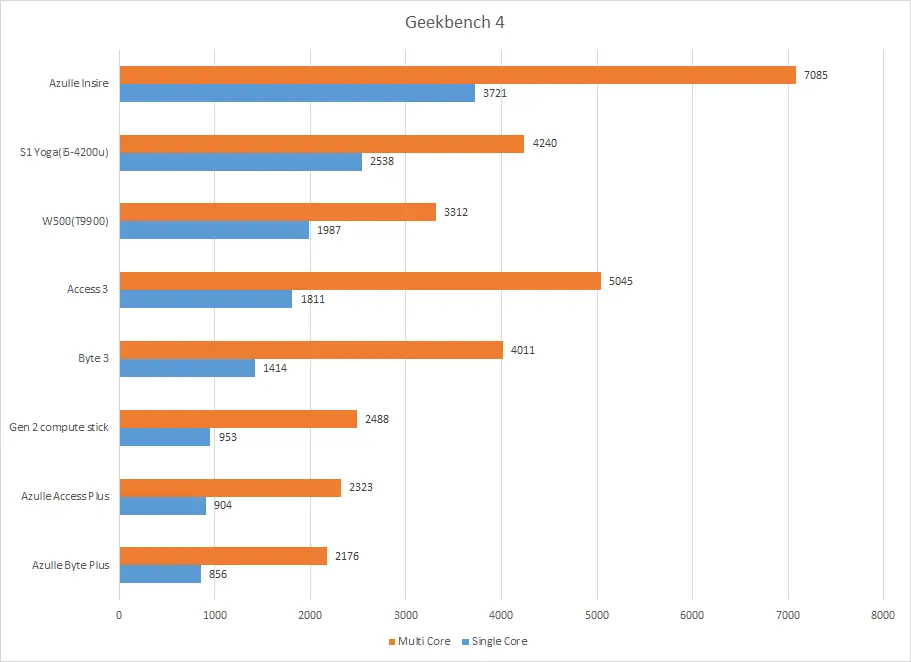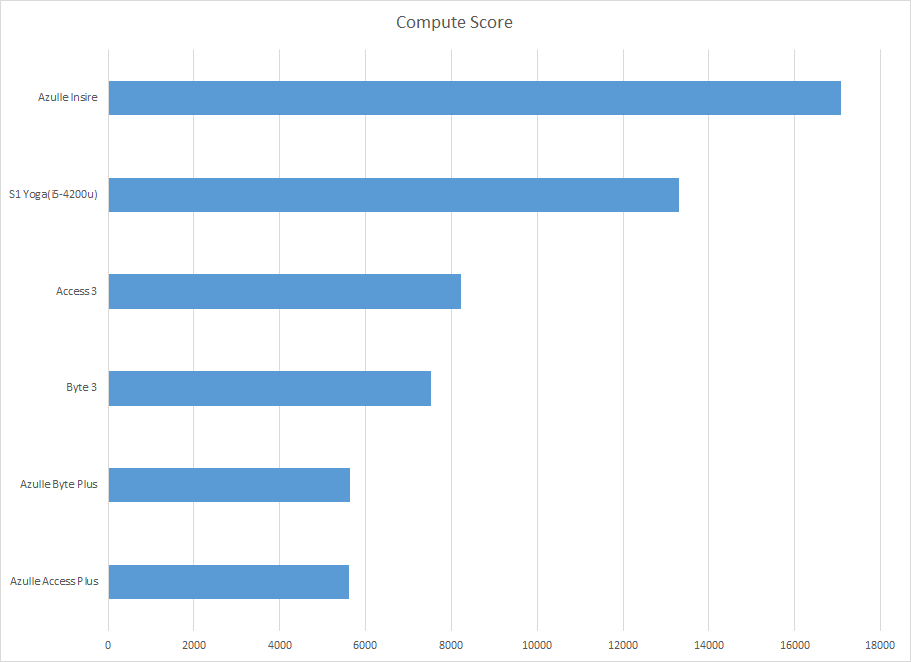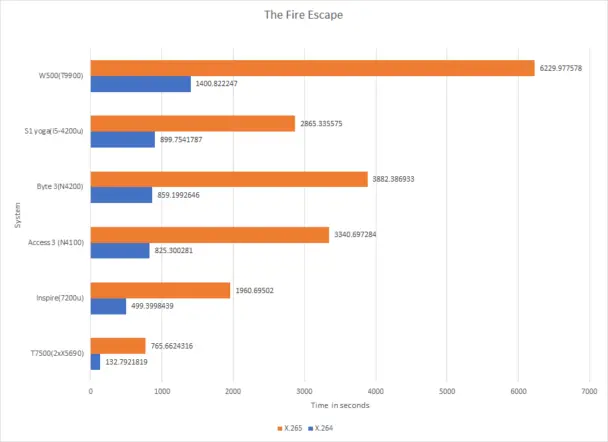Azulle Access3 Review, Smaller Faster Better Stronger
Although visually nearly identical to it’s older sibling this years new Access 3 has a few tricks up it’s sleeve. Packing a newer SoC than the larger Byte 3 even, the Access3 demonstrates that small changes can add up to a whole new experience.
First impressions
The Access3 comes in the same well thought out packaging we’ve come to expect from Azulle. Dense foam protects the PC inside the thick cardboard box and the included manuals lay everything out clearly. One could be forgiven for mistaking the Access3 for it’s predecessor as most of the key changes are internal. In fact the only visible external change is the replacement of a USB 2.0 port with a second 3.0 port. Overall is is still a good design although I would have liked to see a move towards USB-C for the power connector also opening the way for a second video out at the same time.
| Access Plus | Byte Plus | Access 3 | |
|---|---|---|---|
| OS | Windows 10 Home | Windows 10 Pro | Windows 10 Pro |
| Cpu | Atom x5-Z8300 | Celeron N3450 | Celeron N4100 |
| Memory | 4Gb | 4Gb | 4Gb |
| Storage | 32GB emmc | 32GB emmc | 32GB emm |
| Audio | Combo in/out 3.5mm | Combo in/out 3.5mm | Combo in/out 3.5mm |
| Networking | Axxis usb2 Fast ethernet | Realtek PCIe Gigabit ethernet | Realtek PCIe Gigabit ethernet |
| Intel 3160 Dual band AC wireless | Intel 3165 Dual band AC wireless+Bluetooth | Intel 3165 Dual band AC wireless+Bluetooth | |
| Ports | 1 usb 3.0 | 3 usb 3.0 | 2 usb 3.0 |
| 1 usb 2.0 | 1 usb 2.0 | ||
| 1 USB C | |||
| 1 microSD | 1 Full SD | 1 microSD | |
| 1 HDMI | 1 HDMI | 1 HDMI | |
| 1VGA | |||
| 1 Fast Ethernet | 1 Gigabit Ethernet | 1 Gigabit Ethernet | |
| 1 Kensington lock slot | 1 Kensington lock slot | 1 Kensington lock slot |
Setting the specifications side by side not only does the Access3 have substantial internal upgrades it’s also much more competitive with the larger Byte3. Improvements to networking such as the inclusion of PCIe Gigabit ethernet and a current model Gemini Lake cpu put the Access 3 in an excellent position compared to it’s competition. Other than the desire for an increase in baseline storage(something we’ll augment using our SE730H during the review) the Access3 is more than well equiped. In testing we are going to be comparing the Access3 to its immediate predecessor. We’ll also be using our previous mobile storage test system, an i5-4200u Thinkpad as a reference point. We will be covering several applications where I would expect to see this system used in including signage , video playback , light gaming and emulation , as well as industrial applications.. Industrial applications may seem an odd choice however considering the devices fanless nature it would fare very well in a shop. The lack of air fans means particulate including metallic fibers won’t be pulled into the system increasing it’s survivability.
Synthetic performance
Ignoring the rule that bigger is better we see the Access3 outperform the Byte 3 across the board. Where the Byte 3 was approaching older i5’s like the 4200u the Access3 and it’s newer Gemini Lake processor is outright besting it even if singlet hreaded performance still belongs to the i5. We see an improvement on the graphics front as well. This is a uprising showing for a system that fits in a pocket and really demonstrates just how far Intels atom line of cpus have come.
Utilmaker Cura
Cura is a 3D slicing application. This means that it is used in the preparation of models to be printed on a 3D printer. Although this step can be done on the same PC that generated the models, it is quite common to in spaces where a 3D printer is shared between multiple systems of a dedicated system to this function. This allows a system to monitor the progress of the model as it is printed and to make adjustments and tweaks on the fly without having to go back to a primary production system.
We use the same two models as usual our sphere and a more complex shape. The constant slicing has been removed from more recent versions of cura although the Access3 is quick to slice the model when asked. It very easily generates and allows manipulation and rotation of a model in order to print this 1 inch diameter sphere. Taking a look at the more complex model which was designed to stress the system you can see it take some additional time. However it still performs more than adequately at this task feeling comparable in smoothness to performing a similar task on my laptop a ThinkPad yoga.
Office applications
As always I took time to use most of the office suite. I ran trough editing some larger spreadsheets(our SSD database) and well as some generic word processing. The Access3 impressed at such tasks with my only thoughts being it could use more room than it’s default internal storage.
Signage
Signage was tested using RiseVision a windows based platform. There were no issues using the Access3 both at 4k and 1080P even demonstrating the ability to handle multiple video feeds. Signage is actually a key application that Azulle promotes for the Access line although not using RiseVision specifically.
Video Editing
Although not something you’d want to edit regularly on at 4k due to a lack of internal storage the Access3 handles minor editing tasks well.We’re continuing to use a benchmark based on one of my favorite editing applications Shotcut. Even considering it’s fanless nature we see it outperforming older i5 systems which I regularly use to cut at 1080P.
Gaming performance
As far as always fanless systems are not generally targeted towards gaming. The Intel graphics in it are however fantastic compared to prior generations. However we have seen older games as well as emulation tasks are things they generally perform well at leaving them at home as an entertainment center.
Minecraft
Running the latest 13.x update Minecraft ends up ironically the newest application in our suite is it’s received constant updates since its release was most recently updated insert date here for the world of color update. Running on a Minecraft we can see the Access3 has little issue keeping the frame rate to a reasonable level at 1080. We see it’s bouncing around 30 frames per second although this plummets when I try to jump to 4K . On HD and full HD screens the Access3 will have no issue running the full Java-based version of Minecraft. On a side note in a multiplayer environment I would suggest using a larger system as the host server.
Homeworld Remastered
Homeworld remastered represents a three dimensional real-time strategy game and is going to tax almost every function on the bite three . Graphically it seems to have detected the Intel HD graphics and turn quite a bit of the eye candy down or off although that hasn’t left the models unpleasing it anyway, from a performance perspective I had no issues playing through multiplayer match and beating up on the AI . Performance in Homeworld feels smooth , I unfortunately don’t appear to have a frame rate quote for Homeworld. Although it appears limited to the refresh of the panel not what the Access3 can handle.
Startrek Online
Star Trek online represents a modern MMO in our suite. Unlike our experience with the Byte3, the Access3 performed quite well. Running through the mission was smooth in both ground and space. This was such a drastic shift although I’m aware the Access3 has the better gpu I’ll have to revisit the Byte3 specifically to check if it was a server issue when I was doing my testing.
Retro gaming
Project 64 and our video recorder unfortunately didn’t cooperate with each other. However in practice 5th gen(Nintendo 64, PS1 ect) and older consoles seem to run just fine on the intel chip. Taking a peek at the results it seems that there’s a bit of performance left on the table with only 2 cpu cores loaded by most emulators.
Video
The Access3 officially supports 4k decoding. In practice it handles this quite well for both local content and network based streams coming from a Plex server. Serving however is a bit out of the realm of the Access3 although with it’s lack of internal storage.
Final thoughts
Looking at it all together Azulle has delivered a very well rounded product. The improved internals are a huge step forward pushing the Access3 into an entirely new performance envelope. I would have liked to see the card reader moved to UHS-II(or III) since it’s the only way to provide permanent internal storage. Further more as I’ve mentioned a move to USB-C would open up a lot of opportunity for increased connectivity. Adding CEC to the HDMI port by default would make this device a defacto choice for media centers although the Access3 is already an excellent choice there. For children doing school work, signage applications and office work you’d be hard pressed to find a better value especially with the inclusion of a windows pro license. The Access3 Is available for 219.99 as tested direct from Azulle and there’s a windows 10 Enterprise version for 229.99 I recommend for signage specifcally.

